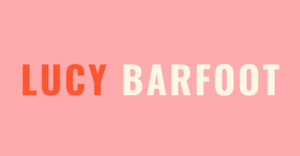Bokeh how to 07
Bokeh how to 11
Bokeh ay, I've been meaning to try it out for over a year, and now I've finally cracked it. It was much easier and much more fun than i first imagined. I'm not at all skilled with manual photography, and this was relatively easy for me.Bokeh is a work used to describe two things:1. Photographing something in crisp focus with the background blurred (bit boring)2. The exciting kind, where you photograph lights using a lens cut into a shape, i.e. hearts, triangles, lightening bolts, arrows and each separate light becomes that shape.The type of Bokeh I've experimented with is the second kind, and I make this the focus of my images. Most bokeh has the focus on an object in the foreground, but I just love the light being in different shapes, and got a bit carried away with this. I'll call it 'level 1 bokeh'!So I made a tutorial of how you make your own Bokeh lens:Here's what you need: your camera, masking tape, a scalpel, scissors, thin cardboard (half a cereal box is perfect) and a pencil1. Draw around the lens of your camera2. Cut the circle out, leaving 1/2 an inch of extra circumference3. Then use the cardboard to cut a seperate 2-inch wide strip of cardboard which will fit around the side of your lens, leaving 1/2 an inch spare of length at the end. Tape this to the lens using the masking tape, then slide off4. Pick up the circle, and cut into that 1/2 an inch of extra circumference, creating a bit of a frill/flap, all the way around, making cuts every half a centimeter or so5. Bend those frills/flaps down6. Use a scalpol to cut out a shape of some sort in the centre of the circle (ideally you'd measure where the centre is). My favorite is an arrow7. Now you attach the strip and the circle together to make your Bokeh lens. Use one bit of tape to start off with, then keep tucking the flaps in and sticking8. Work your way around the circle, until it's all tucked in and stuck down with a few pieces of tape9. Nearly there10. On the inside, stick some tape there too - to make it more of a rigid structure11. Finish off the lens by making taping over all the gaps on the outer side12. Done! Go and photograph some lights And here are the technical things:The size of the shaped hole depends on two things: the aperture of your lens and the focal length you're using.Try using these calculations, which I copied from DIY Photography.netTake the focal length that you wish to use (e.g. 100mm)Divide this by the aperture value that is smallest on your lens (e.g. f/2)Equals the largest diameter of the cut out shape (shape should be smaller than this) (50mm)So...50mm f/2 - shape must be under 25mm75mm f/2 - shape must be under 37.5mm100mm f/2 - shape must be under 50mm50mm f/2.8 - shape must be under 17.5mm50mm f/3.5 - must be under 14.2mm Other important things:
Make sure the shape you create is in the centre of the circle
The lights you shoot need to be really bright (traffic lights, car lights, city lights, amusements, street lights, carnivals, bright bulbs)
When you're focusing, make sure the lights are out of focus, otherwise the shape won't come through
If you're shooting an object infront of the bokeh lights, focus on that object with distant lights out of focus behind (a shallow depth of field)
If the image is coming out too dark, increase the time the aperture is open. This means a longer exposure, letting more light in, and the image will be brighter
Here's some more of the images I created:Fairy lightsCar brake lightsAuckland Sky tower & the city

















